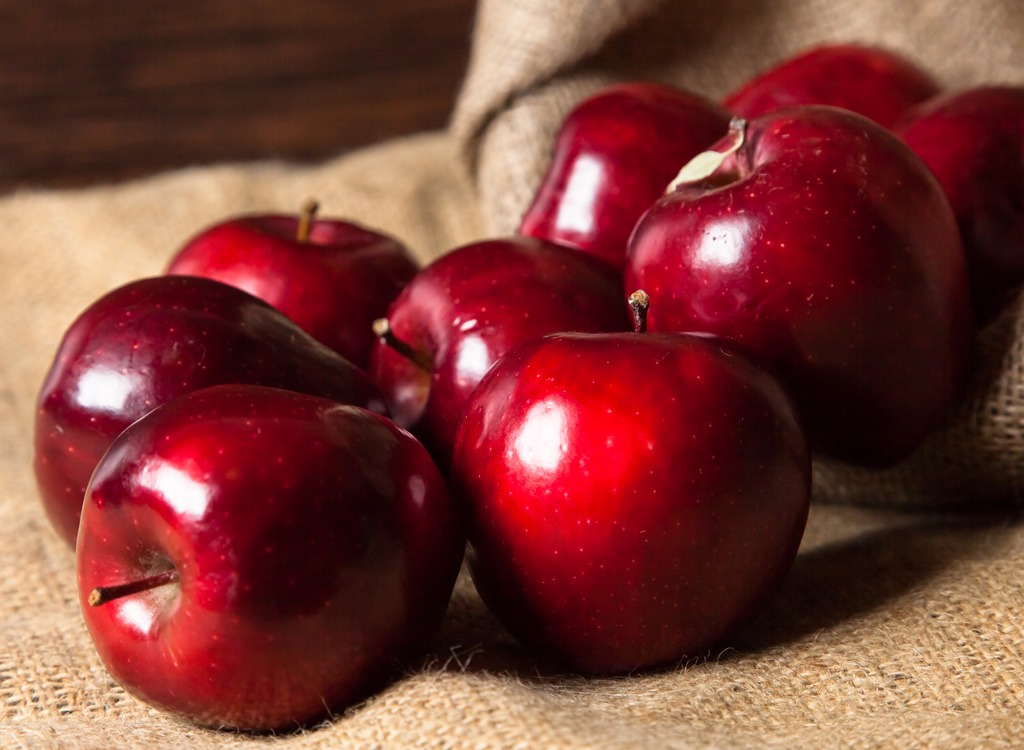The Best Way to Wash an Apple

Even if you rub an apple on your shirt until it shines, your efforts may not be removing as much dirt, bacteria, and pesticides as you think. In a recent study published by the Journal of Agricultural and Food Chemistry, University of Massachusetts, Almherst researchers analyzed how effective washing methods are at removing pesticides. The study exposed apples to the fungicide thiabendazole and the insecticide phosmet for 24 hours before dunking them into a Clorox bleach solution, a diluted baking soda solution, and testing those methods against the FDA's recommendation, which is washing thoroughly under running tap water.
The Results
Baking soda trumped using tap water or bleach in removing the most pesticides, taking "12 and 15 min to completely remove thiabendazole or phosmet surface residues," the study explains. While the method was less effective in removing pesticides that have already penetrated the apple, it did degrade the pesticides enough for you to scrub some more off. That's why our researchers at Eat This, Not That! agree with Lili He, a food scientist at the University of Massachusetts Amherst and the study's co-author: she recommends cleansing your apples with about a teaspoon of baking soda mixed into two cups of water.
(To avoid hanger, wash your apples in the baking soda solution right after you bring 'em home. That way, you'll always have clean apples to just grab and go!)
To Peel Or Not To Peel
What about slicing your apple's skin off, you may ask? "Peeling is more effective to remove the penetrated pesticides; however, bioactive compounds [such as protective antioxidants] in the peels will become lost too," researchers warn. And we definitely don't want that. To reduce potentially toxic pesticide exposure completely, buy apples that are pesticide-free, like many organic brands. And to make the right choice every time you eat, don't miss our exclusive list of the 50 Best Fat-Burning Foods.








